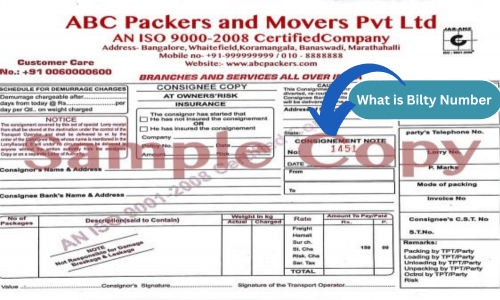Introduction – What is Bilty?
In the Indian transport and logistics industry, the term “Bilty” is commonly used. It is an informal word for what is officially known as a Lorry Receipt (LR) or Goods Receipt (GR). Whether goods are being sent by road within a city or across states, bilty is a key document that confirms a transporter has received the goods for delivery.
Bilty Meaning in Transportation
Bilty is basically a receipt given by a transport company when they accept goods for delivery. It acts as:
- Proof that the goods have been handed over
- A contract between the sender and transporter
- A tracking document
It usually contains:
- Bilty number
- Name and address of the consignor (sender)
- Name and address of the consignee (receiver)
- Description of goods
- Quantity and weight
- Vehicle details
- Destination
Bilty in Hindi – बिल्टी क्या होता है?
In Hindi, Bilty is written as बिल्टी, and it is a commonly used term in the trucking and transport business. People from all over India, especially small businesses and traders, use this word when sending goods by truck.
What Are Bilty Charges?
Bilty charges are the fees taken by the transport company for creating and handling the bilty document. These charges may depend on:
- Distance of delivery
- Weight or volume of goods
- Type of goods
- Transport company’s policy
These charges usually include:
- Paperwork and documentation
- Admin or office handling costs
- Tracking and system usage
For example, long-distance or heavy goods may have slightly higher bilty charges.
Why is Bilty Important in Transport?
The Bilty or Lorry Receipt (LR) is not just a formality – it is a critical part of the Indian transport system. Here’s why:
✅ 1. Official Proof of Shipment
It shows that the goods have been handed over to the transporter.
✅ 2. Helps in Tracking
The bilty number is used to track the goods in real-time.
✅ 3. Legal Support
If goods are lost or damaged during transport, the bilty can be used as proof to claim compensation.
✅ 4. Responsibility and Transparency
It makes the transporter accountable for safe and timely delivery.
✅ 5. Record Keeping
Transporters, senders, and receivers all keep a copy for their records and accounts.
Conclusion – Bilty is the Backbone of Indian Road Transport
In simple words, bilty is a very important document in the Indian logistics sector. Whether you are a small trader or a large manufacturer, having a valid bilty ensures your goods are tracked, protected, and properly recorded during transportation.
Frequently Asked Questions (FAQs)
Q. Is bilty the same as LR (Lorry Receipt)?
Yes, in India, bilty and LR are the same thing.
Q. Who prepares the bilty?
The transporter or logistics company prepares the bilty when they receive the goods.
Q. Is bilty needed for every shipment?
Yes, especially for commercial shipments and long-distance transport, a bilty is necessary for legal and tracking purposes.
